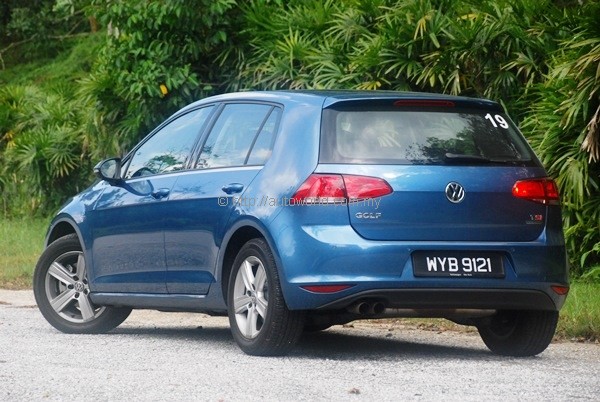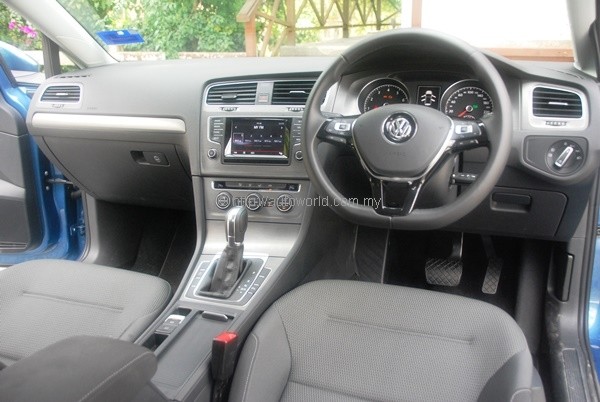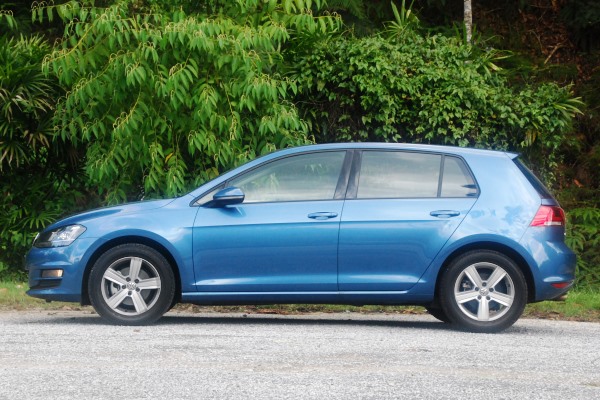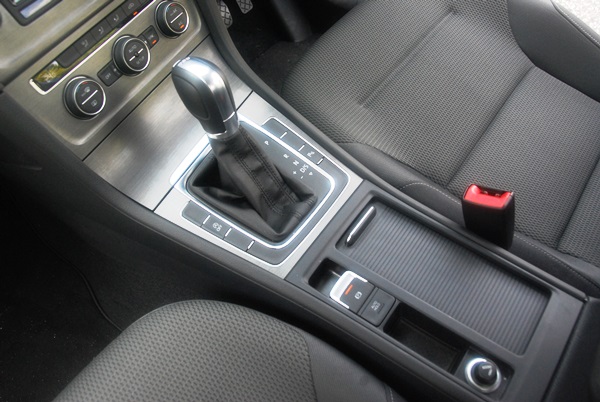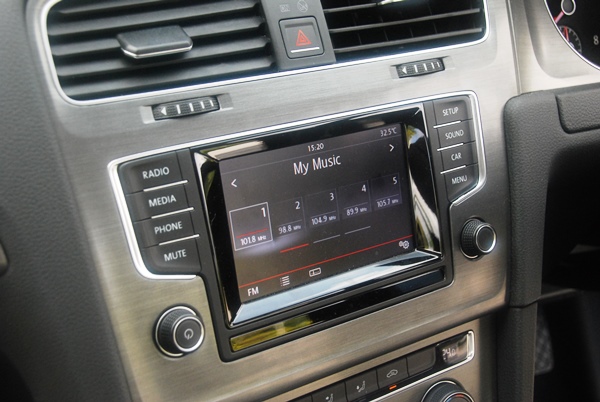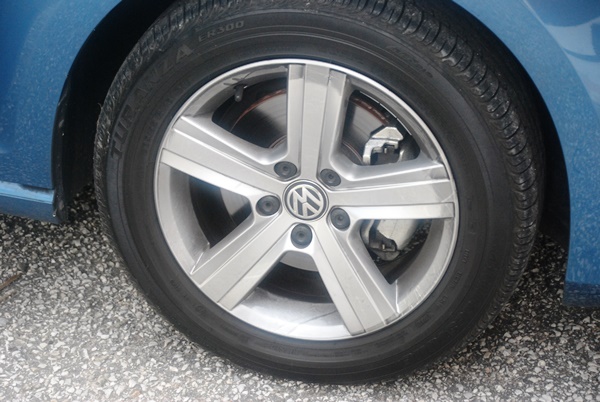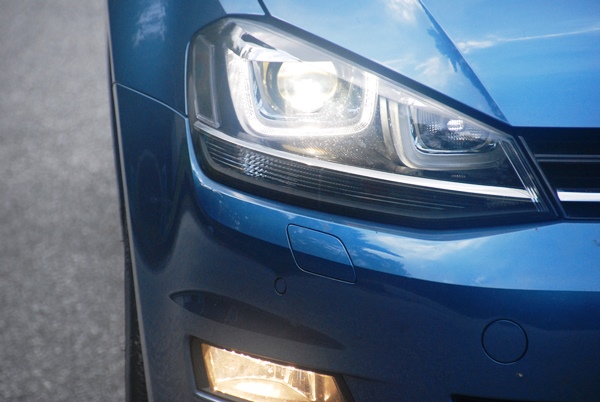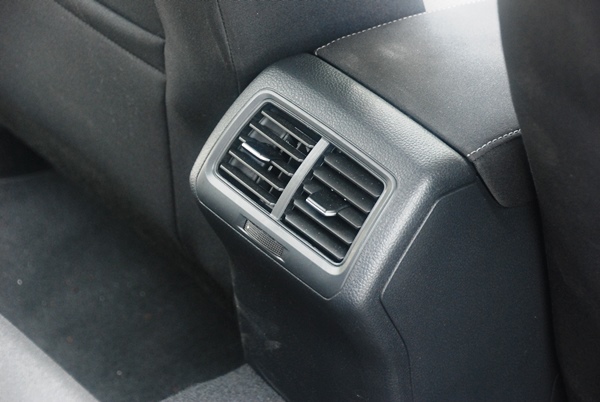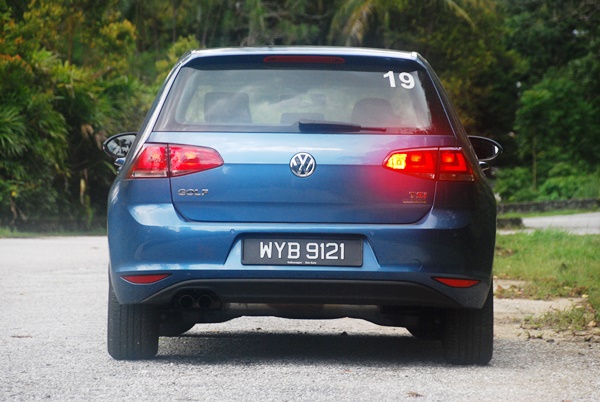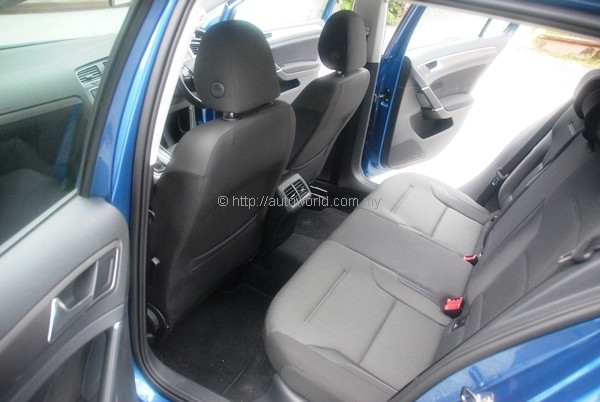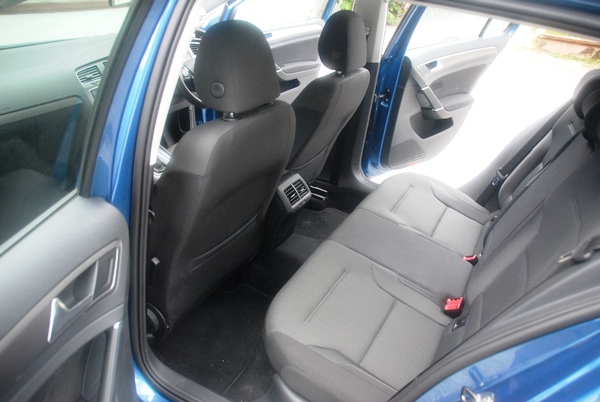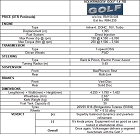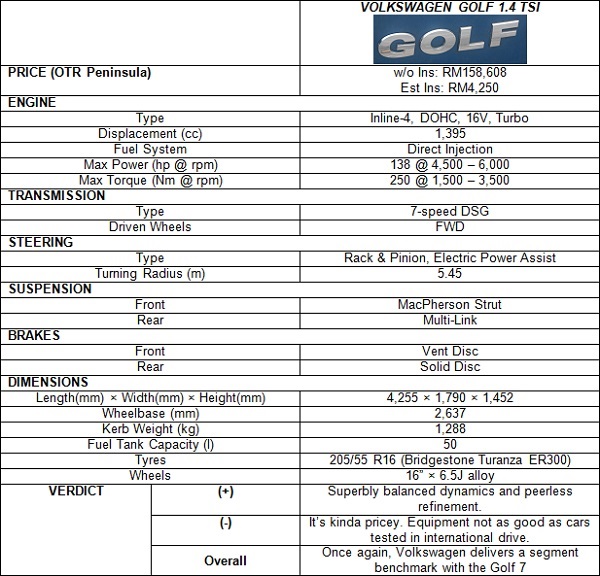Volkswagen Golf 7 Test Drive Review
Although the Volkswagen Golf occupies a somewhat pseudo-luxurious standing in Malaysia, it is in actual fact a car for the masses. In Europe, the Golf is an ubiquitous middle-class purchase and just like how a whole generation Malaysians grew up with childhood memories of their father’s Proton, most European families would have owned a Golf at some point or another in their history.
The Golf is therefore a car of humble origins but with strong heritage and considerable substance. It is perhaps the most important car of the entire Volkswagen Group and that statement has never been more true than with the new seventh generation Golf, which Volkswagen now officially refers to as the Golf 7 to create differentiation with its forebears. More than any other Golf that came before, the Golf 7 is probably going to be one of the most important landmark models in VW’s corporate history.
 |
| Narrower front grille makes the Golf look wider and more aggressive from the front. |
As we all know, the mighty VW Group achieves its massive economies of scales by sharing platforms across its portfolio of brands. Previously, Golf platforms were invariably recycled to across the board into various C-segment products such as the VW Jetta, Audi A3, and Skoda Octavia. The Golf 7’s new MQB platform, however, is designed with unprecedented flexibility and can be scaled up and down in size to go as big as a Passat or as small as a Polo. In other words, every new transverse-engined VW Group product in the future could conceivably be based on the Golf 7, which is a lot of eggs in the MQB basket.
Malaysia only had the Golf 6 for less than three years, but its arrival here marked the start of an impressive surge in Volkswagen sales that until today shows no signs of diminishing. The Golf 7 was launched earlier this year and its task is to sustain the momentum that its predecessor sparked and lift Volkswagen’s sales volumes to rival the top mainstream brands in the country.
 |
| VW designers ensured that the Golf 7’s side profile is unmistakably that of a Golf. |
Price & Specifications
Like it did previously with the Golf 6, Volkswagen is offering the Golf 7 in only one variant – the 1.4 TSI, albeit with less power than before, mated to a 7-speed dry clutch DSG as standard. There are no cost options and neither are there any variation in trim levels. Its on-the-road price of RM158,608 before insurance represents an increase of about RM2,000 from the Golf 6.
Justifying the price increase is an enhanced suite of equipment that includes new items such as multicollision brakes, auto start/stop, 5.8″ touchscreen, electronic parking brake with auto hold, and electronic differential lock (XDS) taken from the previous generation Golf GTI. It should be noted, however, this is not actually the best trim level that the Golf has to offer, but the need to keep its price close to the predecessor’s probably necessitated the omission of items such as Park Assist, adaptive dampers (DCC), and Active City Stop.
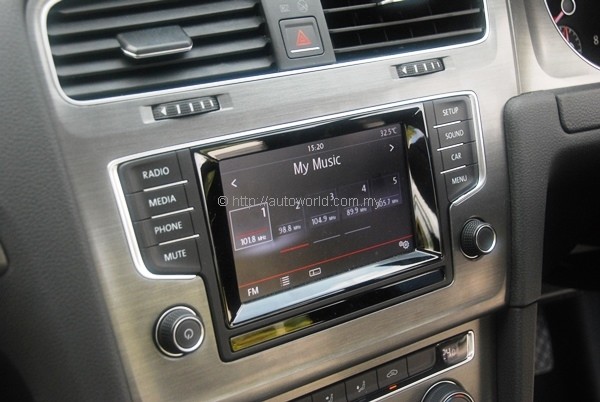 |
| Integrated touchscreen really ranks among the best in the business. |
Mechanically, the Golf 7 is all-new from ground up, the ambitious brief which VW laid for the MQB platform necessitated a clean slate approach in order to give the platform its required flexibility. As a matter of fact, VW is able to offer the Golf 7 with two different rear suspension designs – versions making less than 120hp make do with a torsion beam. This is, thankfully, an issue which we Malaysians won’t have to worry too much, as the sole variant on offer in our market makes 138hp and is thus independently sprung at all four corners.
Like the MQB platform, the new 1.4-litre EA211 engine is all new and completely unrelated to the previous EA111 twincharged engine. The new engine features all-aluminium construction and is designed with the aim of reducing weight, fuel consumption, and complexity. One of the arguments against the previous twincharged TSI engine was that despite its overall excellence, it was too complex and thus very expensive to build.
 |
Exterior
Worldwide, Volkswagen offers the Golf with a choice of three trim line packages. Regular readers would probably recall our story from the international media drive in Sardinia last year, where the test cars were finished in the range topping Highline trim. Malaysia settles for the mid-range Comfortline trim, and the differences are clear if you were to compare our local cars to those shown in our Sardinia story.
For starters, the rims are downsized an inch, from 17 to 16, which in my personal opinion is a good thing. The smaller rims are less pleasing aesthetically, but they represent a pragmatic choice with better ride comfort and lower tyre replacement costs being yours to enjoy in the long run. Volkswagen Group Malaysia did upgrade the lighting package to give us bi-xenon headlights and LED tail lights for more effective illumination and a more premium appearance – because nothing spells premium like a fancy set of lights.
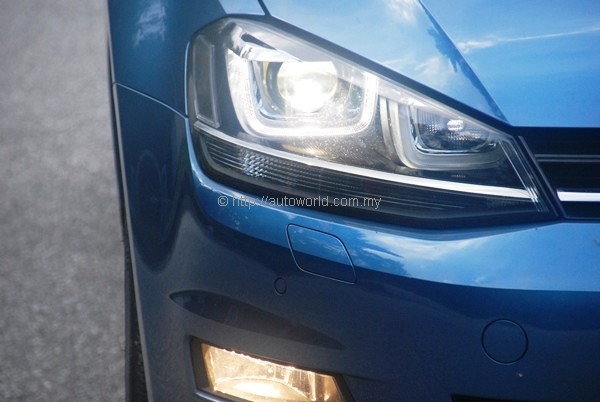 |
| LED daytime running lights and Xenon HIDs. |
Interior
Despite successfully reducing a considerable amount of weight, Volkswagen was also able to free up a great deal more space in the Golf 7’s cabin. Build quality matches the Group’s typically high standards of fit and finish. It can’t match the Ford Focus for flair, but it is functional and selection of materials feel appropriately premium, even if it is quite obviously a step down from the full-spec test cars we experienced in Sardinia last year.
Ergonomics are beyond reproach, and the dash-mounted touchscreen is without a doubt, the best interface of its kind in the business. It is slick and intuitive; anybody accustomed to iOS or Android mobile devices will have little problems getting used to it. The electronic parking brake that is standard in all variants of the Golf worldwide adds a further touch of class to the interior, although this writer personally prefers the more substantial action of pulling the handbrake.
 |
| Malaysia-spec vehicles are not the highest spec variants available, but still decently equipped. |
Driving Experience
Within just a few kilometres, it quickly becomes clear that the new Golf 7 1.4 TSI is 20 horses down in output from its twincharged predecessor. Acceleration is no longer as effortless as before, but this is not to say that the new Golf is slow. It still has the power of a 1.8-litre engine and more torque than a highly-tuned 2.5 propelling a body not significantly heavier than a Civic’s. There is a definite reduction of straight line pace in the new Golf from its predecessor, but not by crippling margins, and certainly not enough to dent its case one bit.
Adaptive dampers was in the equipment manifest of our test cars in the international media drive but unsurprisingly omitted for Malaysia. Fortunately, Volkswagen’s default setting proved spot on to bless the Golf with a well-balanced dynamic repertoire that is marginally biased towards comfort but still taut enough to reward the enthusiast driver. Ride quality over rutted surfaces is almost magic carpet-like, but in terms of sheer entertainment factor and driver involvement, it is perhaps second best to the Ford Focus by the slimmest of margins.
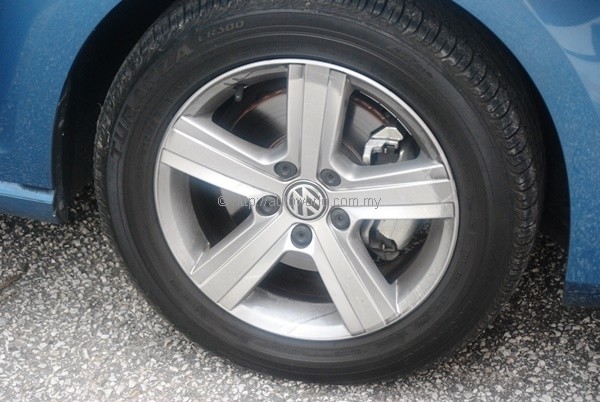 |
| VGM avoided giving us the biggest rim combo, which is probably wise – to the benefit of ride comfort |
As an all-rounder, however, the Golf’s setup is unsurpassed in its class. What’s perhaps most impressive about the Golf is its overall mechanical coherence, where the various components of the vehicle function in perfect harmony to deliver an exceptionally refined driving experience.
There is a lot of talk recently regarding the overall reliability of Volkswagen’s 7-speed dry clutch DSG with recalled units numbering in the thousands. Only time will tell if VW has rectified this issue with the Golf 7, but one thing we can say is that the low-speed jerkiness that plagued earlier iterations of this transmission is less of an issue now, although it still can’t match a torque converter for overall smoothness. The transmission’s shift mapping is pretty faultless overall – you either leave it in ‘D’ or call up a sportier shift pattern in ‘S’, and it will competently handle the rest.
 |
| Instrument panel follows the familiar VW format. |
Verdict
Other than its noticeable reduction in power, the new Golf 7 is superior in almost every respect to its predecessor, which is an impressive achievement from Volkswagen, considering how complete and competitive the Golf 6 still is in its class. The margins of improvement is especially impressive considering that Volkswagen could quite easily have gotten away with a mild rehash of the Golf 6, or simply milk the Golf 6 for another couple of years before replacing it.
The seriousness which Volkswagen took this task is deserving of praise, and it also underlines the Golf 7’s importance to the company. What you are getting with the Golf 7 is undoubtedly the best of what Wolfsburg’s engineers have to offer. This is every bit a worthy member of the Golf lineage – a supreme all-rounder that works for all occasions.
 |




